Left hand cricketers contribute lavishly
By A.C. De Silva
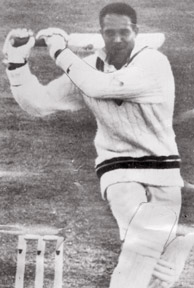 |
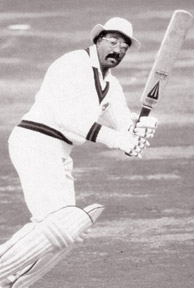 |
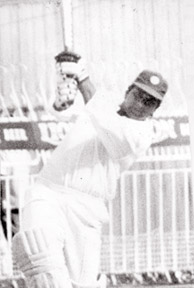 |
| Garfield Sobers - West
Indies |
Clive Lloyd - West
Indies |
Arjuna Ranatuna - Sri
Lanka |
‘LEFT’ CRICKET: Lefthanded batsmen at times are left behind. The
world makes ‘left’ sound almost like a bad word, Southpaw.
They are different these lefthanders. In a right-handed world they
must be different. That world hardly gives them a chance to survive.
This is all the more reason why they are so rare and are getting rarer.
Everything in this world is made for righthanders. For years, society
has discriminated against those who were in a minority. Some parents
would go out of their way to change their children’s habits. Even
natural lefthanders would be forced to write with their right hand. The
tendency to be lefthand would be killed.
This is perhaps one reason why lefthanders have been such a rarity.
Nowadays, the attitude is, however, not so unscientific -
Lefthanders’ instincts are not killed as they used to be.
More now
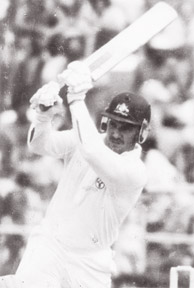
Allan Border - Australia |
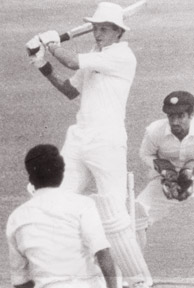
David Gower - England |
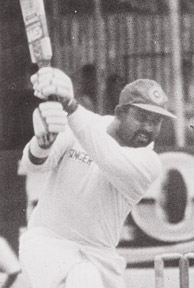
Asanka Gurusinha - Sri Lanka |
| |
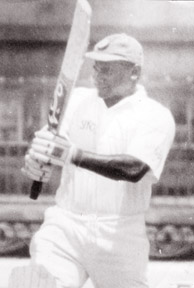
Sanath Jayasuriya
- Sri Lanka |
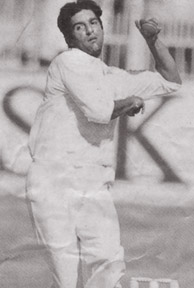
Wasim Akram - Pakistan |
The number of top level lefthanded sportsmen is more in this era than
in earlier ones.
There was a time when lefthanders could not even get equipment to
suit their style. All this has changed over the years though the fact
remains that as a group, lefthanders still are a distict minority.
Until the position changes, the position will contribute to be the
same.
There is a thought that lefthanded batsmen in cricket are precious
material. While it is certainly true that lefthanded batsmen do make a
difference, the fact is that only good once can do what is expected of
them. Quantity is perhaps what is needed by way of lefthanders.
Quality-wise, there has not been such a shortage. A number of bowlers
have been there but only a few of them have been genuine allrounders of
the true southpaw variety (in the sense that they batted and threw
lefthanded too.)
A real destroyer
Take India for example. There was Salim Durrani who was a very good
player. He was such a good player that he could have been a far greater
player if only he did not suffer from grave shortcomings in attitude to
international cricket. On his day, Durrani could destroy the opposition
as a bowler and as a batsman belt the bowling around as he wished.
Durrani was certaintly India’s finest lefthand allrounder.
Then there was Bapu Nadkarni - he was one of the sticky variety, both
as a batsman and a bowler. Then there was Eknath Solkar who was a modern
version of Nadkarni in his batting methods. He was a sticky player too
at the crease and he was able to bowl more than usefully. He was the
third of the fully-fledged lefthanders to have made a Test century, the
other two being Durrani and Nadkarni.
The Indians had four specialist lefthanded batsmen who scored Test
centuries - ‘Deepak’ Shodhan, Nari Contractor, Ajit Wadekar - a good
leader and Surinder Amarnath.
Needless to say, Wadekar was the most prominent in the handful of
topflight batsmen who kept proving how useful they could be towards
breaking up the line of attack and disturbing the field placement plans
of opposing captains. There was also Surinder Amarnath - a specialist
lefthand batsman.
Top trio
The West Indies had three top flight lefthanders - Garfield Sobers,
Clive Lloyd and Larry Gomes. There is no real replacement for Clive
Lloyd nor will the world see another Garfield Sobers again.
Nevertheless, the virtues of a lefthander are not to be underestimated.
So, the southpaws have contributed their might.
Australia had Allan Border - a fighting lefthanded batsman who led a
battery of lefthanders.
England had David Gower and Chris Broad, though not possessing the
liquid grace of Gower, was able to pull England through with his tall
upright stance as a lefthander.
Then there was Pakistan’s Wasim Akram, who with his lefthand batting
had many runs for the Pakistanis. He was a champion left-arm paceman
too. Then there was also Iqbal Qasim, a known lefthanded bowler who also
helped Pakistan with the bat.
Coming to Sri Lanka, there was World Cup winning captain Arjuna
Ranatunga and Asanka Gurusinha. There was also Ravi Ratnayake who proved
how batsmen of ‘the different kind’ could play easily on turning tracks.
There was also Sanath Jayasuriya - the lefthander who was responsible
for many fine knocks. He was also a useful bowler too.
So, there you are - the lefthanders have been able to show the world
that lefthanders have contributed their might towards their countries
and to the game in general.
|

